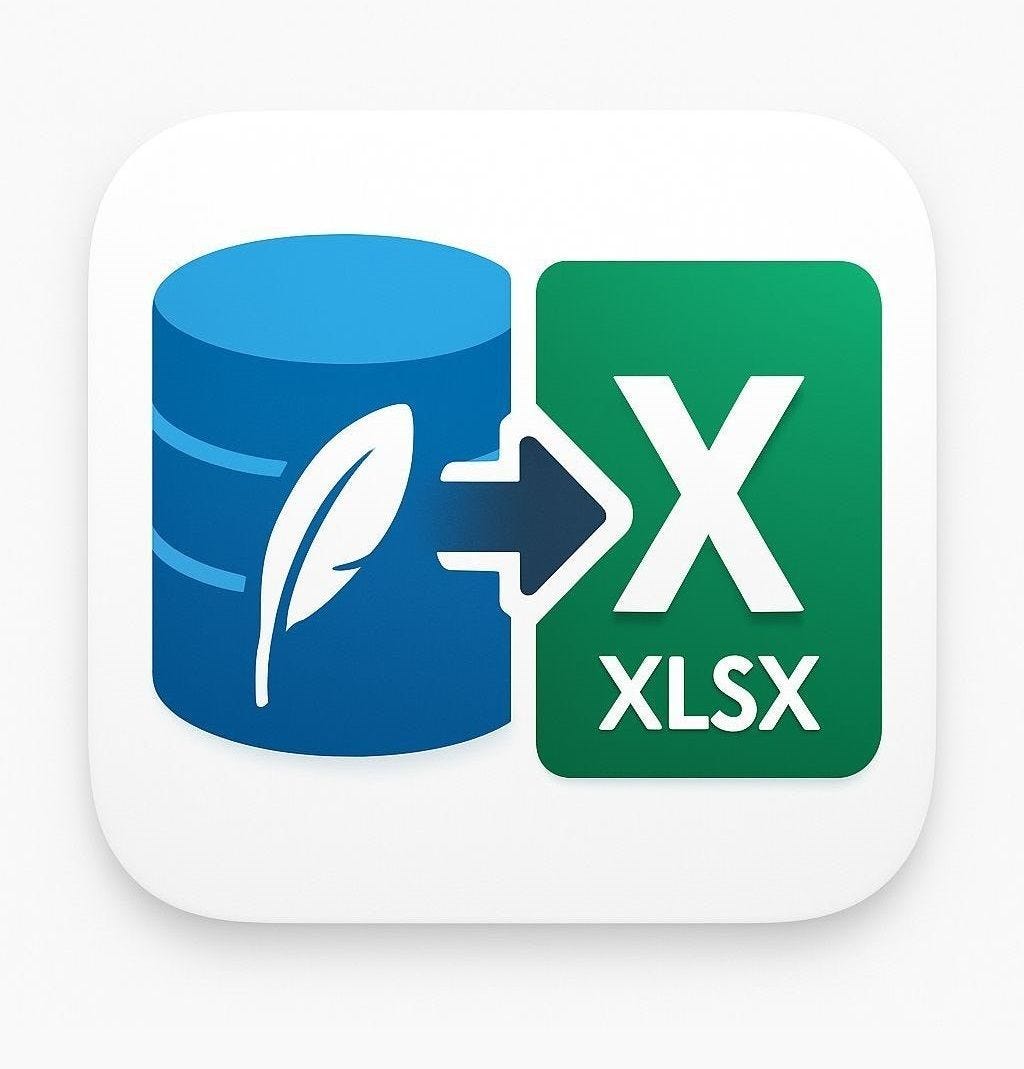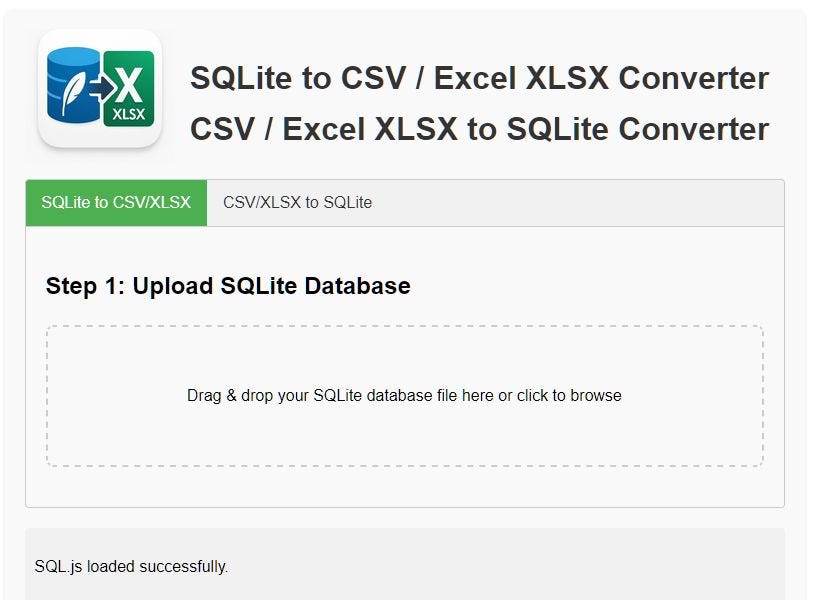
Eugen Barilyuk
Published: 6 June 2025

|
Eugen Barilyuk Published: 6 June 2025 |
When working with structured data, one common need arises in converting between SQLite databases and CSV or Excel (XLSX) files. This is exactly what happened to Maria, who is a data analysis clerk at a mid-sized regional company. She doesn’t write code, she doesn’t know what JavaScript, WebAssemble, or PapaParse is. Her work lived in Excel, and she’s found herself bumping up against limitations she didn’t expect.
So when data arrived in an .sqlite format instead of simple CSV or XLSX, Maria found herself staring at files she couldn’t open — let alone use. Her job didn’t change. The report was still due. But now, the data was locked in files she couldn’t access. With no human help in sight, Maria armed herself with AI and developed her own free online SQLite to XLSX / CSV converter.

The locked data couldn’t be ignored, so Maria tried the usual paths — googling for a software that fits her requirement.
Maria wasn’t the first to face this problem. She searched online, only to find forums filled with shady programming products. There were solutions — expensive desktop tools, third-party web apps. She even found one converter that almost worked… but provided no useful outcome.
She realized that even though tools existed, none were meant for her. Maria didn’t want to give up or wait for someone else to solve her problem. She wanted something simple, private, and immediate.
She thought, “Why can’t I just make my own free online data converter?”
That’s when AI helped. With nothing more than her browser and a few clicks, she got a tool that uploads an SQLite file and instantly turns it into a usable Excel spreadsheet or CSV file.
It was during a casual conversation with an AI assistant that Maria began to piece together an idea. She described her issue. The AI replied with concepts she didn’t fully understand, but it confirmed data format conversion can be done directly in browser.
Using suggestions and explanations form AI, Maria cobbled together a simple HTML file. The result became something she shared with everyone onlie, quietly titled: SQLite to CSV/Excel XLSX Converter.

Maria’s tool was built around three robust open-source JavaScript libraries. Existence of these libraries and their public availability is what made Maria’s project feasible as a browser tool.
SQL-WASM.JS is the main library that brings SQLite, a compact yet powerful database engine written in C, into the browser through WebAssembly — a low-level format designed for optimal performance on web platforms.
SQL.js originated from the process of compiling SQLite’s original C code using Emscripten, a technology that converts C and C++ programs into WebAssembly. The result is a fully operational, server-independent SQLite environment running seamlessly inside a browser tab — exactly what Maria’s project required.
This library allowed Maria’s tool to process and query .sqlite files entirely within the her browser.
Having through SQL.js established in a browser tab a connection to the data stored inside .sqlite file, Maria needed to convert the data in Excel format. AI suggested to use xlsx.js (SheetJS) library.
SheetJS was established in the early 2010s as a grassroots initiative aimed at enabling JavaScript-based Excel file manipulation. It allowed users to create, parse, and export .xlsx files without requiring Microsoft Office or external servers.
Maria’s tool leveraged SheetJS as its core mechanism for converting structured data into Excel format.
Wanting for her tool to be more versatile, Maria has asked for CSV format support in her tool. AI suggested using PapaParse — one of the fastest and most reliable CSV parsers in JavaScript.
Together, these three libraries formed a cohesive and powerful backbone of a simple browser based online converter. All tasks executed entirely within the browser.
The tool Maria created was entirely browser-based, meaning it worked without installing any software and without sending any files online. External libraries used in this project are loaded for local use. The tool informs on successful loading of libraries.
The tool was designed around two key use cases:
Let’s break down how it actually works:
Maria’s application is written in plain HTML, JavaScript, and CSS. It has a clean, accessible interface:
When Maria — or any user — uploads a .sqlite file:
FileReader, then passed to sql.js.SELECT name FROM sqlite_master.SELECT * FROM table LIMIT 100 and shows a preview.All operations are instant and local.
The conversion flow CSV / Excel → SQLite executes in similar manner.
Maria didn’t become a programmer. She still doesn’t write code professionally. But she solved her problem. Not by using a prebuilt system, but by assembling her own solution — piece by piece, guided by curiosity, urgency, and AI.
Surely, her tool is not production grade, it lacks a lot of functionality:
Maria isn’t worried. She has a tool that works for her tasks. And while she still didn’t consider herself a developer, she shared the online converter for others who may find it useful too: SQLite ↔ Excel Converter (eb43.github.io/sqlite-converter.html).